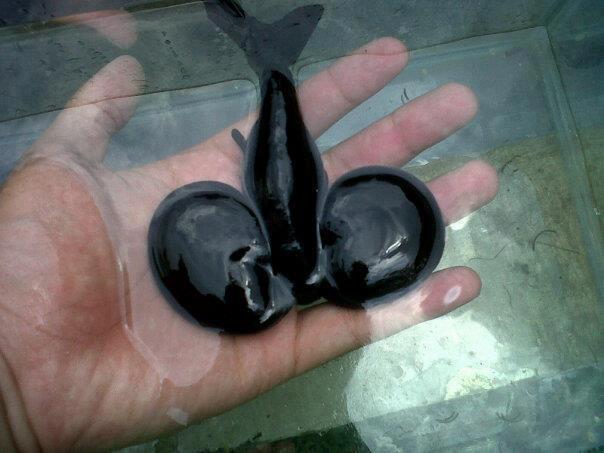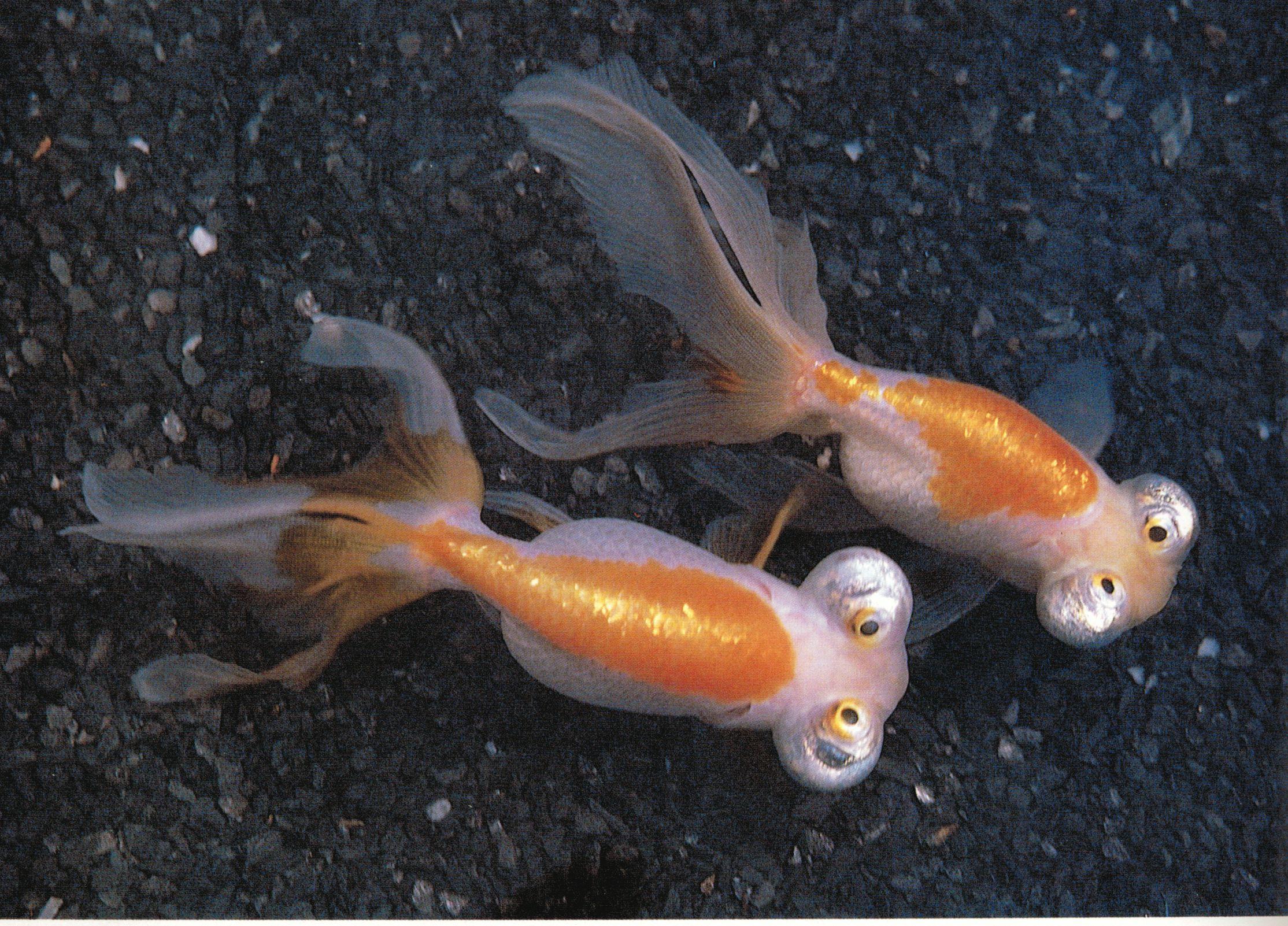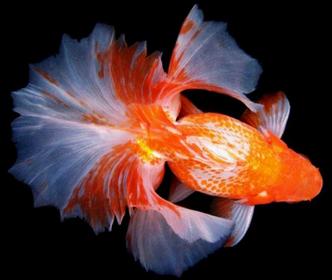Fancy Goldfish - 3
In this page of Fancy Goldfish series, we will discuss about Lionhead, Ranchu, Bubble Eyes, Celestial, Wakin, Jikin and Tosakin
Lionhead
Like the Oranda, the Lionhead goldfish also has head growths. These are located in the same areas as those on the Oranda. However, the lionhead should have all three growth areas in balance. No one growth area should be predominant. The main difference between the Oranda and the Lionhead is that the Lionhead does not have a dorsal fin. For a well formed and healthy fish there should be a gentle slope from the back of the head to the caudal fin. There should be no indentation or bump where the dorsal fin would normally be located. The tail fin on the Lionhead goldfish should be forked from 25% to 75% for the best results. Too much fork, or too little fork and the fish will have problems swimming. The growths on the head cause a slightly rectangular appearance if viewed from above.
Ranchu
The head of the Ranchu closely resembles that of the Lionhead goldfish. However, where the back of the Lionhead is almost flat the Ranchu has a very noticeable curve from the back of the head down to the caudal fin. There is no dorsal fin, and the body of the Ranchu is more rounded. The Ranchu can be found in most of the colors that are common to other goldfish, although the calico is rare. Having said that, most Ranchu are red, white and red, or black. Most Ranchu reach 5 to 6 inches in length but some have been recorded at as much as 10 inches in length.
Bubble Eyes
The bubble eye goldfish has a streamlined body with no dorsal fin.  As the name implies the large bubbles that form behind the eye are the main characteristic of these fish. The bubbles on both eyes should be close to the same size.
While bubble eye goldfish can come in any of the goldfish colors the most common are orange to orange-red.
As the name implies the large bubbles that form behind the eye are the main characteristic of these fish. The bubbles on both eyes should be close to the same size.
While bubble eye goldfish can come in any of the goldfish colors the most common are orange to orange-red.
Celestial
This goldfish has an oval or rounded body with no dorsal fin which  can make swimming difficult for it. Along with that are problems seeing what is in front of it because its eyes point straight up.
It can be an interesting addition to your fancy goldfish collection or an interesting and unusual pet. Celestial goldfish come in all scale patterns and colors normally associated with goldfish.
There are also some celestial goldfish with two growths on their noses called Pom-Pom Celestials.
can make swimming difficult for it. Along with that are problems seeing what is in front of it because its eyes point straight up.
It can be an interesting addition to your fancy goldfish collection or an interesting and unusual pet. Celestial goldfish come in all scale patterns and colors normally associated with goldfish.
There are also some celestial goldfish with two growths on their noses called Pom-Pom Celestials.
Wakin
Considered by the Chinese to be the “common” type of goldfish, the Wakin was not often seen in America until recently. They have a longer body than most fancy goldfish but not as long as the single tailed goldfish. The dorsal fin starts lower on the back of the fish and is low and longer than most. Older fish may develop a head growth or wen. The colors should be very vivid.
Jikin
The Jikin are not often seen in America. They were bred originally as a modification of the Wakin. The noticeable differences in the fish are a shorter more compact body and a double tail that appears to be almost X shaped if viewed from behind. Jikin unlike most other goldfish have a specific pattern of color. The main body of the fish is white with 12 red points including all fins, nose, and gill plate. Because of the shape of the tail these fish seem to swim from side to side.
Tosakin
Tosakin have one of the most unusually shaped tail fins.  Along with a teardrop shaped body with a triangular shape to the head. This fish is normally found in solid colors with metallic scale pattern.
The tail fin is a curlicue which sweeps back towards the head of the fish. Viewed from the side, the tail may appear to be wavy instead of curled.
Along with a teardrop shaped body with a triangular shape to the head. This fish is normally found in solid colors with metallic scale pattern.
The tail fin is a curlicue which sweeps back towards the head of the fish. Viewed from the side, the tail may appear to be wavy instead of curled.




